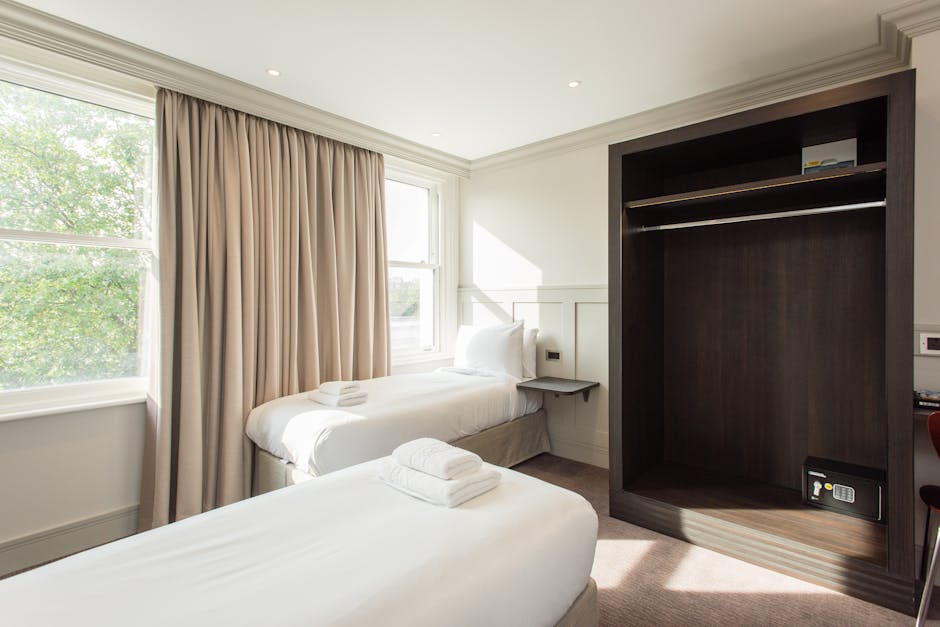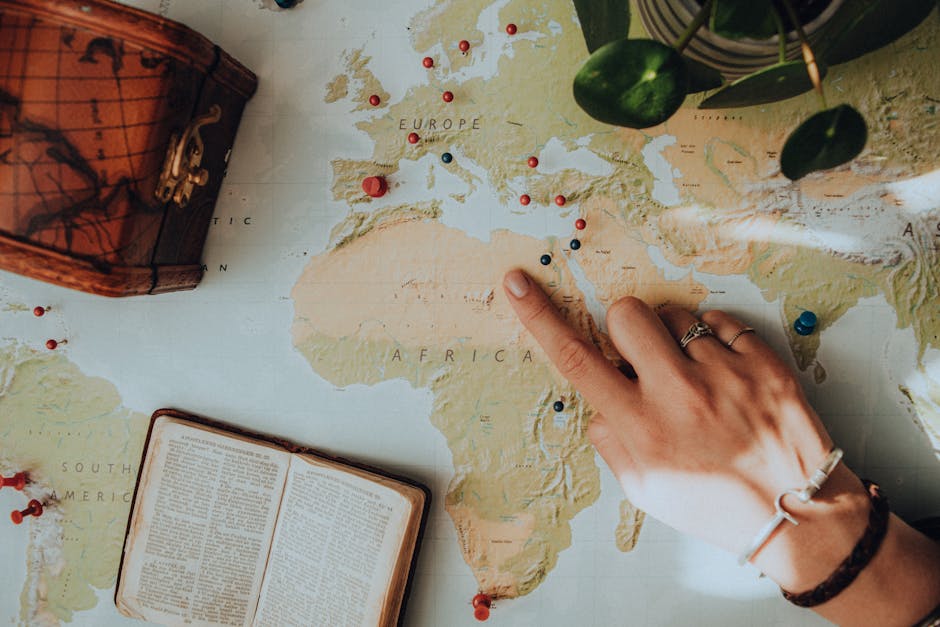Introduction
Welcome, fellow travelers, to the indispensable guide on ‘Maximizing Your Travel Budget.’ Ever swooned over Instagram pictures of dreamy destinations, only to shelve those dreams due to budget constraints? You’re not alone. And, that’s where our talk of the town – the art of maximizing a travel budget – comes center stage. It’s a topic of major interest today, in an era where more people seek experiences over material goods, and finance-savvy globetrotters conquer the world without burning a hole in their pockets.
This article is your trustworthy companion in the labyrinth of budget travel. It takes you by the hand and deciphers complex travel jargon, all while opening your eyes to different strategies, tools, and practical tips to get the most ‘bang for your buck.’ By the end, our goal is to not just teach you to travel frugally, but well. To show you that a shoestring budget can create rich experiences that are, often, priceless. So, buckle up, fasten your seat belts, and embark on this exciting journey of exploring the world, one budget travel tip at a time.

Understanding Your Travel Budget
To some, the concept of a travel budget may sound like an oxymoron. After all, isn’t the purpose of travel to venture free from everyday restraints, including financial ones? However, a travel budget isn’t a leash; it’s a keystone element of smart and sustainable travel. It empowers you to prioritize your expenses and do more of what you love by being mindful of your resources. Far from being restrictive, a well-planned travel budget is your passport to freedom and enjoyment.
A travel budget is essentially a financial plan for your journey. It’s a roadmap of your projected expenses, which usually include airfare, accommodation, meals, transportation, and entertainment, amongst others. You may also include miscellaneous items, such as souvenirs and emergency funds.
Furthermore, it’s crucial to understand that a travel budget isn’t a one-size-fits-all model. It will vary depending on factors such as your destination, travel style, and personal preferences. Therefore, a backpacker venturing on a solo adventure may have a different budget structure than a family planning a weekend getaway.
Now, let’s briefly touch on what it means to maximize a travel budget. It doesn’t necessarily equate to scrimping and saving at every opportunity. Instead, it’s about extracting the maximum value from your budget, ensuring every dollar gets you the most rewarding experiences possible. This may sometimes mean splurging on a once-in-a-lifetime opportunity or choosing cheaper options to extend your travel duration.
Getting to grips with your travel budget isn’t just about numbers. It’s a balancing act requiring strategic thinking and a dash of creativity. After all, it’s not just about how much you spend, but how wisely you spend it.

Planning for Your Trip
Planning is hands down one of the key elements to ensure a budget-friendly expedition. Without proper planning, you may find yourself straying from your budget due to spontaneous adventures or surprise expenses. With a well-laid plan, you can improve the cost-efficiency of your trip substantially.
Core Aspects of the Trip
First and foremost, start by outlining the core aspects of your trip – destination, duration, must-see spots, and preferred activities. This provides a clear picture of what your trip will involve, making it easier to allocate your budget.
Detailed Itinerary
Subsequently, plan out your itinerary in as much detail as possible. This doesn’t mean you need to map out every minute of the day, but firming up things like which days you’ll be traveling, sightseeing, or relaxing can help visualize where your money will be going.
Flexibility in Plans
Incorporate flexibility in your plans. For example, being open to fly on specific days of the week could land you cheaper flight tickets; statistics suggest flights are generally less expensive on Tuesdays or Wednesdays. Flexibility also allows you to adjust your plans should unforeseen costs crop up.
Early Bookings
Ever heard of the expression, ‘the early bird gets the worm’? The same logic can be applied to getting the best deal possible. Booking flights, accommodations, and activities well in advance often seizes lower prices than last-minute bookings.
Utilizing Digital Resources
In this digital age, there are numerous travel websites, apps, and resources designed to aid in economical trip planning. These range from ticket comparison websites, accommodation booking platforms offering deals, to travel blogs that provide local insider tips that could save you a buck or two.
In summary, careful and meticulous planning can go a long way in making your trip cost-efficient. It enables everything to fall into place economically, without compromising on the quality of the travel experience. Balancing spontaneity with foresight can make all the difference in enjoying all that travel has to offer, without breaking the bank.

Maximizing Accommodation Budget
Among the most significant pieces of the travel budget puzzle is, unsurprisingly, accommodation. No matter where in the world you’re headed, you’ll need a spot to hang your hat at night. Specifically, if you’re on a budget, it’s important to find accommodations that are not just comfy, but cost-effective.
One of your best bets for finding cheap, yet high-quality accommodation is to do your research. Scour through hotel and hostel sites, cross-check their rates on different platforms, and always read the reviews no matter how low the price. Sometimes, a few more dollars can drastically increase comfort and cleanliness.
The sharing economy has brought forth solutions like Airbnb, which offers affordable digs with a side of authentic local living. Renting a fully-equipped home or an apartment can also work out cheaper if you’re traveling as a group plus it also gives you the option to cook, hence a perfect opportunity to save some more.
Hostels are another tested and true accommodation option for economical travelers. They’re well-known for their dormitory-style rooms, offering affordable stays and community spirit. Many hostels also offer private rooms if you’re someone who values privacy but doesn’t want to give up on the prospect of meeting fellow travelers.
In addition, accommodation doesn’t have to be traditional. You could find a comfortable bed in a homestay, a farmhouse, or a monastery. These offbeat accommodations often provide an immersive cultural experience while keeping your budget intact.
Also, location plays a crucial part in choosing your stay. Staying right in the center of the city can skyrocket the costs. Instead, opt for places that are a bit off the heart of the city but are still well connected with public transportation.
Lastly, you might want to contemplate unconventional options such as volunteering for a free room through programs like “Workaway” or “WWOOF”, or if you’re the adventurous type, camping could be your route to not just a cheap but an unforgettable stay.
In the end, remember that cost-effective accommodation doesn’t mean you have to compromise on comfort. By being savvy about where and how you book, you can stretch your budget further with an awesome abode.

Eating and Drinking on a Budget
When traveling, food and drink costs can quickly compound and become a significant part of your budget if not kept in check. This is integral, especially if you are a food lover enticed by the myriad of cuisines and beverages that new travel destinations invariably offer. That said, keeping dining costs within controlled lines without compromising on the pleasure of exploring new flavors doesn’t have to be an impossible task.
A practical way to save money on meals is to frequent local markets and grocery stores, not only do they offer cheaper food options but they’re also a great platform to experience authentic local cuisine. Often, food and drinks from supermarkets are much less costly than restaurant-provided meals, and picking up ingredients to make a light breakfast or a simple lunch can significantly reduce your food expenses over time.
Opting for cooking yourself occasionally also adds to the benefits, especially if you have access to a kitchen. Look for accommodations that provide cooking facilities, and turn some of your market purchases into lovely self-prepared meals. This way, you’re saving money and also getting the added enjoyment of experimenting with local ingredients.
Another smart strategy to cut down on food expenses is to have your main meal at lunch. In several regions, restaurants offer lunch at substantial discounts compared to dinner prices. Leveraging daily specials and happy hours can also lead to considerable savings.
But don’t get overly cautious and miss out on the local gastronomic scene entirely. Research and identify places where locals dine; these are usually more affordable and offer good value for money. Also, street food, local food stalls, and food trucks are delicious, economical options that offer a taste of the regional cuisine.
Consider investing in a refillable water bottle to save on the cost of buying bottled water, a quick win for both your budget and the environment!
Remember, the essence of traveling isn’t just about seeing new places, but discovering, immersing, and tasting the diverse cultures, and that definitely includes food. So enjoy, but just with a little budget-smart finesse!

Cost-Effective Transportation
Sometimes transportation costs can eat up a significant portion of your travel budget if you’re not careful, and who wants to spend all that cash just getting around? This section will explore ways to save on transportation, putting more of your hard-earned money towards the experiences you’re traveling to enjoy.
Start by considering your options. Look beyond the obvious — taxis, rental cars, or tourist-focused transportation. Instead, why not try local public transportation like buses, trams, or trains? These are often much cheaper and, as a bonus, may offer an authentic flavor of local life. Plus, they’re typically comprehensive in their coverage, meaning you can hit most, if not all, of the must-see spots on your itinerary.
If you’re staying in a compact city, think about walking or renting a bike or scooter. Not only does this present an opportunity for exercise (let’s be real, we all eat a little more on vacation), but it also allows you to see parts of the city you may otherwise miss. Many cities have easy-to-use bike or scooter rental schemes that are light on the wallet. And walking? That’s free!
If you absolutely must rent a car, do your due diligence and research heavily to find the best deals. Take note of the different prices offered by various rental companies, and make use of any discounts you could potentially leverage. Consider economy car options — they may not be glamorous, but they’ll get you where you need to be.
Now, let’s do a comparison. Say a taxi ride costs approximately $30 each way from your accommodation to a popular landmark. In contrast, a bus ticket typically ranges from $1-$3 depending on the distance. Over a week, this could potentially save you well over $100 — money that could be better spent on a memorable experience or two.
Saving on transportation may require a slight lifestyle adjustment and some compromises, but remember — each penny saved is a penny you can spend elsewhere on your travel adventure. After all, travel should be about the journey, not just the destination.

Tips for Budget Sightseeing
Sightseeing can easily become a major expense on your travel budget if not planned correctly, especially in popular tourist destinations where fees and donations are commonplace for most attractions. However, there are plenty of ways to see the sights without draining your wallet, proving that exploring new places doesn’t necessarily have to come with a hefty price tag.
One effective strategy is to discover less “touristy” alternatives. Just imagine, there’s probably a quaint and charming neighborhood, an impressive architectural site, or a breathtaking natural park waiting for you off the beaten path. These congenial detours not only offer fresh perspectives and unique experiences, but they also usually cost significantly less, if not nothing at all.
Speaking of gratis entertainment, don’t overlook the value in exploring local parks. Whether it’s a sprawling city park filled with local flora or a small park tucked away in a bustling city, these green spaces often capture the heart of a location while becoming an economical way to enjoy the outdoors. This strategy is especially valuable in urban locales where park systems are plentiful and well-kept, and often host free public events and festivals.
Museums, too, can be a budget-friendly focus for sightseeing. Many museums worldwide offer designated days or hours where entrance fees are heavily discounted or waived entirely. Be sure to research these opportunities ahead of time as they may not be widely advertised, or schedules may vary based on the season or location.
Consider taking advantage of historical attractions, as well. Many cities and towns pride themselves on their rich history and heritage, which they preserve in the form of landmarks, monuments, historical districts, and heritage trails. These are typically free to explore and offer a wealth of context about the place that you’re visiting.
Finally, remember that sightseeing on a budget doesn’t equate to a lesser travel experience. It’s all about tapping into local resources, smart planning, and looking beyond the traditional options. In fact, these budget-conscious options often provide more authentic and meaningful travel experiences, allowing you to connect with the local culture, history, and vibe in ways that pricier, touristy attractions often can’t.

Detecting and Avoiding Hidden Costs
When traveling, it’s not just the explicit expenses such as airfares, accommodation, or meals that chip away at your budget, but those sneaky hidden costs that like to really put you out of pocket. It’s like they’re playing a game of hide-and-seek, only, they’re much better at hiding than we give them credit for. They appear out of nowhere and, before you know it, you’re digging into your budget with a frown on your face.
Some of the common hidden costs in traveling include transaction fees for card payments abroad, added costs for WiFi or extra hotel services, and tourist taxes, among others. Airport transportation is another under-the-radar expense, with cabs or airport parking lots often carrying a hefty fee. Plus, there’s always the risk of overstepping your mobile data limit and getting slammed with roaming charges. Ouch!
So how do we avoid these pesky hidden costs? Awareness is your first line of defense. Research is key here – check with your bank about foreign transaction fees and consider getting a travel-friendly credit card or account. It’s also essential to check whether your accommodation price includes extra costs for WiFi, cleaning, or local taxes.
Public transportation rather than taxis or transfers can vastly reduce travel costs, and it often provides a more authentic travel experience, too. As for those data charges, consider getting a local SIM card or relying on free WiFi spots whenever possible.
Creating a buffer in your budget for unexpected expenses can be a lifeline when these hidden costs creep up. This isn’t really about avoiding costs, more about good old fashioned preparedness. It may not be as fun as planning your itinerary, but trust me, you’ll thank yourself when you can enjoy that impromptu boat ride without feeling guilty.
Remember: Hidden costs are the crafty chameleons of the travel world, blending into our trips until – surprise – they reveal themselves. But with a little foresight, research, and planning, you can outsmart them and ensure that your travel budget stays healthy and robust.

Budget Travel Tips for “Luxurious” Destinations
Stepping foot in luxurious destinations like Paris, New York, or Tokyo without breaking the bank might seem like wishful thinking. But, don’t let those intimidating price tags dissuade you. Despite these cities’ reputations for opulence, there are plenty of ingenious ways to stretch your travel budget and even catch a whiff of luxury.
A key strategy to economize your travel in typically expensive destinations is timing your visit during the off-peak seasons. The concept of off-peak travel essentially means you choose to visit when there are fewer tourists around. This method has several advantages ranging from cheaper flights and accommodations to fewer crowds and shorter queues, all of which can significantly lighten your travel costs. For instance, consider visiting Rome in early spring or late autumn, you’ll be surprised by the affordability paired with the serenity of fewer tourists.
Second, luxury doesn’t always have to mean expensive. Be strategic and squeeze every last bit of value from your travel budget. A majestic beach trip doesn’t always necessitate a five-star resort; at times, a clean, cozy beach hut might provide an equally memorable experience at a fraction of the cost. Live like a local and explore small, family-run eateries instead of Michelin-starred restaurants for a flavor-packed trip that doesn’t stab your wallet.
Finally, utilize online resources for scoring deals and savings. Websites like Expedia, Kayak, or Airbnb often provide special offers, last-minute deals, and loyalty programs that can help you save a substantial amount. You can also look out for city passes which often encompass various attractions at a discounted price. Don’t shy away from travel clubs and reward programs, which can earn you points or discounts on flights, accommodation, and attractions.
Swanky destinations are not always synonymous with exorbitant expense. Travel smart and keep an eye out for deals, and you’ll savor the high life without the high bills. With the right strategies and planning, “luxury” can indeed fit into your budget.

Utilizing Travel Resources and Tools
In today’s technological era, travel budget management is simplified thanks to numerous travel apps and websites. These platforms assist users across a multitude of tasks such as expenditure tracking, discovering affordable flights, accommodations, and dining options. They prove to be critical in facilitating smart, cost-saving decisions.
Flight & Accommodations
- Budget-Conscious Flight Searches: One such tool is
Skyscanner, a fountain of flight data, capable of finding the most economical airfare worldwide. The app’s standout feature, the ‘Everywhere’ search, lets you uncover flight deals to various destinations simultaneously, allowing cost to influence your travels. - Resourceful Accommodation Booking: Platforms like
Booking.comandAirbnbfurnish diverse accommodation choices from lavish 5-star hotels to cosy local apartments, designed to suit your budget.
Dining Expenses
Savvy apps play a crucial role in managing dining expenses:
Meal Ticketfeatures restaurant deals.HappyCowserves as a directory for affordable vegetarian and vegan eateries worldwide.
Travel Communities and Local Tourism Websites
Travel resources expand beyond just apps and websites:
- Online Traveler Communities: Forums and blogs like
Lonely Planet’s Thorn TreeorRick Steve’s Travel Forumprovide platforms for travelers to exchange tips, recommend affordable attractions, and suggest lesser-known but captivating locales that travel guide books often omit. - Local Tourism Websites: Don’t overlook local tourism websites of your travel destination. They often share calendars filled with free events, attraction coupons, and economical dining options. Guides like
The Paris PassorBarcelona Cardprovides a plethora of deals on sightseeing and transport.
In totality, the abundance of travel resources and tools available today is invaluable. The trick is to venture into this universe, select the tools which align with your needs, and make knowledgeable decisions to save money and turn the world into your playground without depleting your savings. Despite what glossy travel brochures might suggest, a memorable travel experience is not about luxury but about immersing oneself in novel cultures, food, people, and landscapes – and these resources make it astonishingly achievable.

Conclusion
As we draw our journey through budget-friendly travel to a close, let’s take a brisk stroll through the financial gauntlet that we navigated together. We started with understanding how a travel budget works. Then we mastered the art of trip planning, uncovered the secrets of affordable accommodations, and feasted upon culinary savings without sacrificing experiencing the local cuisine.
We then shifted gears, literally, and dove into the nuances of economic transportation. Not forgetting the joys of exploration, we highlighted budget sightseeing’s best kept secrets and also shone a spotlight on the oft-neglected hidden costs in travel. Then we jumped headfirst into the world of ‘luxurious’ destinations, strutting about like royalty without burning holes in our pockets. Punctuating our financial expedition, we discovered various travel resources and tools to make our travel life smoother.
We hope this travel-budgeting manifesto reshapes your journey into a cost-effective adventure. This isn’t just a switch in travel habits; it’s about changing our mindset towards traveling, understanding that unforgettable experiences don’t always have to come with an extravagant price tag.
To wrap up, we encourage you to approach your next trip with a light heart, knowing that budget constraints do not mean compromising on captivating experiences. The world is still our oyster, regardless of our budget. So let’s pack our bags, put on our globetrotting boots and set forth towards our next adventure – efficiently, economically, and enthusiastically. So, where is the world taking you next?
